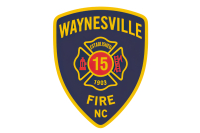Rediscovering inspiration
In the mid-1970s my primary writing interest was poetry. I was consumed night and day by poetry for perhaps five years and took part in poetry readings throughout the southern mountains. Some poems were published in little magazines like “Wind,” “Touchstone” and “The Small Farm” that flourished during that era. I even published a mimeographed newsletter-journal called “Unaka Range” that lasted a few years in which I had the audacity to publish at least one of my own poems each issue.
It was an era when every little town had at least one resident poet and quite often a small printing press of some sort. The readings were as much social as literary occasions, and the wine flowed before, during and after. I can recall some others, mostly poets, from this area who were a part of that scene: Nancy Simpson in Hayesville; Bettie Sellers in Young Harris, Ga.; Jim Stokely (Wilma Dykeman’s son) in Newport, Tenn., edited “Touchstone”; Jeff Daniel (Danny) Marion taught at Carson-Newman and edited the best of this region’s little magazines, “The Small Farm”; Thomas Rain Crowe was living in either Robbinsville or Cullowhee; Gary Carden was and is living in Sylva. Those associated with Western Carolina University included Newt Smith, Elizabeth Addison and Kay Stripling Byer, who was until recently the poet laureate of North Carolina. I can still hear Elizabeth Addison’s precise diction as she read her poems. I hated to read after Elizabeth because my own diction was so mumble-jumbled.
One of the young poets of that era from WNC was Robert Morgan, now primarily known for his novels and a recent biography of Daniel Boone. Robert didn’t show up at any of the readings because he was teaching far away at Cornell University in Ithaca, N.Y. He was already writing the sort of close-observation poems about the natural world that I was trying to write. He did them so deftly I couldn’t figure out how to steal anything from him short of abject plagiarism. We corresponded some. He gave me one piece of advice that has stuck: “Be careful about adverbs.” The following is from Robert Morgan’s website:
“I was born October 3, 1944 in Hendersonville, North Carolina and grew up on the family farm [near Zirconia] in the Green River valley of the Blue Ridge Mountains... After starting out in engineering and applied mathematics at North Carolina State University, I transferred to UNC-Chapel Hill and graduated in 1965 with a B.A. in English. In 1968 I received a Master of Fine Arts degree from UNC-Greensboro... My first writing teacher was the novelist Guy Owen at N.C. State. He encouraged me to write stories and poems about the place and people where I had grown up. One day he brought one of my stories to class, an account of visiting a great-grandmother in an old house in the mountains, and announced he had wept when he read the story. This was better praise than I had gotten in math classes, and I was hooked on writing. My earliest publications were short stories, but I soon became caught up in the excitement about poetry in the late 1960s. I had a lot of encouragement from Jessie Rehder at UNC-Chapel Hill and Fred Chappell at UNC-Greensboro. Fred was the best reader of poetry I had ever met... [My] first book, Zirconia Poems, [was published] in 1969. After coming to Cornell in 1971, I wrote only poems for 10 years, and published three more books of poems, Land Diving, Trunk & Thicket, and Groundwork.”
I’m not sure why, but I got away from writing poetry about 1980 — or maybe poetry got tired of me. But of late, for reasons we won’t go into, I’ve gotten back to poetry. Poems are flowing out of me like water from a spigot in the back of the garden that someone forgot to turn off: haiku, sonnets, verses both free and rhymed, sestinas, Petrarchian renderings, you name it. Late last Saturday night I invented a poetic form new to the English language poetry I call “simulated blank verse,” whereby every 10 syllables you break the line and keep on trucking. Counting stresses or rhyming is frowned upon. If you can count to 10, you can write simulated blank verse.
I’m also back to where I started with Robert Morgan 35 years ago, studying his poems to see how he does it. I’ve decided that he has a gift for what he does. Could have been something in the water at Zirconia. Here are two excerpts and one complete poem, just in case you ever want to contemplate the circular interrelationships that exist between old hubcaps in a creek, an owl’s eyes, and discs that furrow the landscape.
Related Items
Sprinkled with needles the snow is still intact in thickets.
Blind cars rusting in the woods.
Pink clay stains through the snow and yellow holes where rabbits pissed.
Cellars of air moving down the creek.
The valley sails on, a farm in its hold.
— from “Creek” (Zirconia Poems, 1969)
In the pine woods, at the log
enclosure with a roof
over one corner,
you can get up close
to the grunting breather.
And he knows you’re there, always
watching through a chink.
Suddenly whirls
his great weight
squealing to the other
side, for all his size quick as a cat; stands
in mud plush.
— from “Hogpen” (Land Diving, 1976)
Hubcaps
The tractor runs over dirt and shapes it, turning
stubble and moving the hill
furrow by furrow to the terraces, slicing clods, wearing
them away and chopping roots
to rot in sweet beds of decay.
The owl: eyes like arenas
gathering
the weeds and hungry ditches.
She guards the air like a monument
Shedding a field of energy downwind.
Old hubcaps burning all night in the creek.
— (Red Owl, 1972)
George Ellison wrote the biographical introductions for the reissues of two Appalachian classics: Horace Kephart’s Our Southern Highlanders and James Mooney’s History, Myths, and Sacred Formulas of the Cherokees. In June 2005, a selection of his Back Then columns was published by The History Press in Charleston as Mountain Passages: Natural and Cultural History of Western North Carolina and the Great Smoky Mountains. Readers can contact him at P.O. Box 1262, Bryson City, N.C., 28713, or at This email address is being protected from spambots. You need JavaScript enabled to view it..









